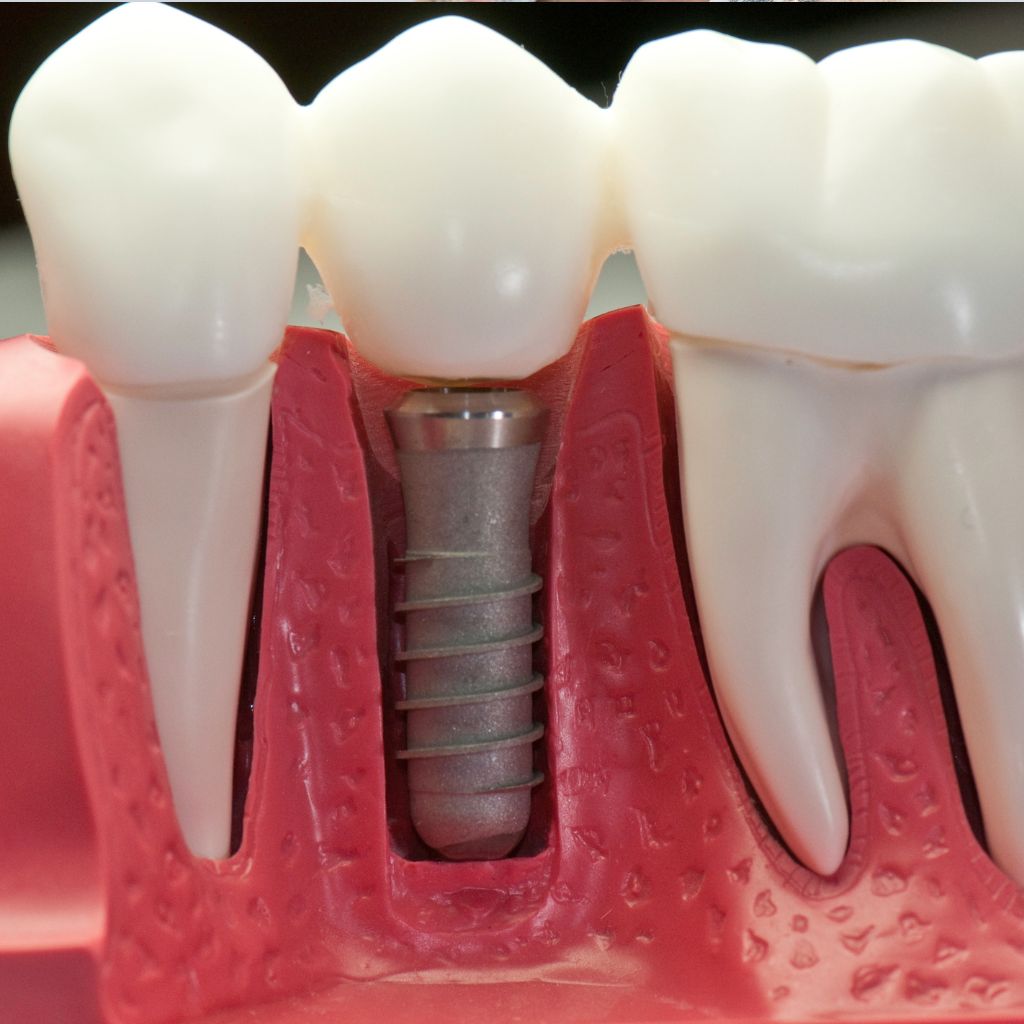If you’re considering dental implants, you’re probably wondering about pain. It’s completely normal to be concerned. The good news is that while the idea of having a titanium post surgically placed in your jawbone sounds intimidating, most patients report that dental implants are far less painful than they anticipated.
Let’s walk through what you can really expect during the dental implant process, from surgery through recovery, so you can move forward with confidence rather than anxiety.
How Painful Are Dental Implants During Surgery?
Here’s the most reassuring fact to start with: during the actual implant procedure, you shouldn’t feel pain. Modern dentistry has made tremendous advancements in making the implant process comfortable.
What Happens During Dental Implant Surgery
When you arrive for your implant surgery, your dental team will first ensure you’re completely comfortable. The procedure typically involves:
- Preparing the surgical site in your jawbone
- Carefully creating space for the implant using specialized drilling equipment
- Inserting the titanium implant post into your jawbone
- Closing the gum tissue over the implant (in traditional techniques) or placing a temporary cap (in immediate-load techniques)
Many dentists now use 3D guided technology, which creates a precise surgical guide customized to your mouth’s exact anatomy. This approach minimizes tissue trauma and improves accuracy, leading to faster healing and less discomfort afterward.
Despite how invasive this sounds, you’ll be properly numbed and potentially sedated throughout the procedure. What you will feel is some pressure and vibration as the dentist works, but actual pain should be minimal to nonexistent.
Types Of Anesthesia Used For Dental Implants
Your comfort during the procedure is ensured through various anesthesia options, tailored to your needs and anxiety level.
Local Anesthesia For Dental Implants
Local anesthesia is the foundation of pain control during implant surgery. Your dentist will first apply a topical numbing gel to the surface of your gum, followed by an injection of anesthetic that completely blocks pain signals from the surgical area.
With local anesthesia, you remain fully conscious, but the surgical site becomes numb within minutes. You might feel pressure or movement as your dentist works, but sharp pain should be completely eliminated.
Sedation Options For Anxious Patients
If you experience dental anxiety or want additional comfort during your procedure, several sedation options are available:
- Oral sedation: Taking a prescribed anti-anxiety medication before your appointment to help you relax
- Nitrous oxide (laughing gas): A mild sedative gas that creates a sense of euphoria and reduces anxiety
- Conscious sedation: Typically administered intravenously, this creates a deeply relaxed state where you remain conscious but may not remember much of the procedure
- General anesthesia: Reserved for extensive cases or extremely anxious patients, this renders you completely unconscious
Many patients find that conscious sedation offers an ideal balance—you’re awake enough to respond to instructions but relaxed enough that the procedure seems to pass quickly and with minimal stress.
Dental Implant Pain After Surgery: The Recovery Timeline
While the procedure itself shouldn’t hurt, you will experience some discomfort during recovery. Understanding the typical timeline can help set realistic expectations.
The First 24-48 Hours After Dental Implant Surgery
This is when your discomfort will likely peak. As the anesthesia wears off, you’ll begin to experience:
- Mild to moderate pain at the implant site
- Swelling of the gums and possibly face
- Some minor bleeding
- Sensitivity around the surgical area
Most patients describe this pain as an ache rather than sharp pain. It’s typically well-managed with prescribed pain medication or over-the-counter pain relievers. The swelling usually reaches its maximum around 48 hours post-surgery.
During this initial phase, you might rate your discomfort around 3-5 on a 10-point scale—uncomfortable but generally manageable with medication.
Days 3-7: What To Expect During Dental Implant Healing
By the third day, you should notice improvements. The healing pattern typically follows this course:
- Days 3-4: Swelling begins to subside
- Days 4-5: Pain levels noticeably decrease
- Days 5-7: Discomfort becomes mild and localized to the implant site
Most patients can return to work and normal activities within 3-5 days, though you’ll still need to follow dietary restrictions and careful oral hygiene practices.
By the end of the first week, many people rate their discomfort at just 1-2 on a 10-point scale, with some experiencing virtually no pain at all.
Complete Healing Timeline For Dental Implants
While your initial recovery happens quickly, complete healing and integration of the implant takes much longer:
- First 2 weeks: Soft tissue healing around the implant site
- 1-2 months: Significant bone healing and early osseointegration
- 3-6 months: Complete osseointegration (fusion of the implant to your jawbone)
After the first two weeks, most patients experience no daily discomfort from their implant. You might notice occasional sensitivity if you press directly on the implant area, but it shouldn’t interfere with normal activities.
Once osseointegration is complete, your dentist will place the abutment (connector piece) and permanent crown. This second-stage procedure may cause minor gum soreness for a few days, but it’s typically much less uncomfortable than the initial implant placement.
What Factors Affect Dental Implant Pain Levels?
Not everyone experiences dental implant surgery the same way. Several factors can influence how much discomfort you might feel.
Bone Grafting And Additional Procedures
If your jawbone lacks adequate density or volume to support an implant, you might need a bone graft first. This additional procedure can extend your overall treatment timeline and recovery period.
Bone grafting typically involves:
– Placing donor bone material or synthetic bone substitute at the deficient site
– Allowing 4-6 months for it to integrate with your natural bone
– Proceeding with implant placement once sufficient bone structure exists
Patients who require bone grafting often experience slightly more discomfort during recovery than those who don’t need this additional step. However, the pain from grafting itself is usually mild to moderate and manageable with standard pain medications.
Individual Factors That Influence Implant Pain
Your personal experience with dental implant pain can be affected by:
- Age and healing capacity: Younger patients typically heal faster with less discomfort
- Bone density: Denser bone can make the drilling process more intense but provides better implant stability
- Overall health: Conditions like diabetes or autoimmune disorders can slow healing and potentially increase discomfort
- Smoking habits: Smoking significantly impairs healing and can increase post-operative pain
- Personal pain threshold: Your natural sensitivity to pain plays a significant role in your experience
Your dentist will consider these factors when planning your treatment and pain management approach.
The Role Of Dental Implant Placement Technique
Surgical technique significantly impacts your comfort during recovery. Modern approaches like flapless surgery (which doesn’t require cutting and folding back the gum tissue) typically result in less discomfort and faster healing.
Computer-guided implant placement also contributes to comfort by:
– Minimizing tissue trauma during surgery
– Reducing procedure time
– Allowing more precise implant positioning
– Decreasing the risk of complications
When researching dentists for your implant, ask about their surgical approach and technology, as these factors can substantially influence your pain experience.
How To Manage Pain After Dental Implant Surgery
Effective pain management is key to a comfortable recovery experience.
Medications For Dental Implant Pain Relief
Your dentist will typically recommend or prescribe:
- Prescription pain relievers: Often prescribed for the first 24-48 hours
- OTC analgesics: Usually ibuprofen (Advil, Motrin) or acetaminophen (Tylenol)
- Antibiotics: To prevent infection, which could cause additional pain
- Anti-inflammatory medications: To reduce swelling and associated discomfort
Most patients find that alternating ibuprofen and acetaminophen provides effective pain relief after the first day or two. Always follow your dentist’s specific recommendations for medication timing and dosage.
Natural Ways To Reduce Dental Implant Discomfort
Several non-medicinal approaches can complement your pain management plan:
- Cold compresses: Apply to the outside of your face for 20 minutes on, 20 minutes off during the first 48 hours to reduce swelling and numb the area
- Soft food diet: Eating soft, cool foods reduces pressure on the surgical site
- Saltwater rinses: After the first 24 hours, gentle saltwater rinses can soothe tissue and promote healing
- Elevation: Sleeping with your head elevated can minimize swelling and associated discomfort
- Avoiding strenuous activity: For the first few days, as increased blood pressure can worsen pain and swelling
These natural approaches can often reduce your need for medication as your healing progresses.
When To Contact Your Dentist About Implant Pain
While some discomfort is normal, certain pain patterns warrant immediate attention. Contact your dentist if you experience:
- Pain that increases after 3-4 days instead of decreasing
- Severe pain that isn’t relieved by prescribed medications
- Throbbing, pulsating pain, especially if accompanied by redness or warmth
- Pain that spreads to your ear, eye, neck, or other teeth
- Persistent bleeding beyond the first 24 hours
- Fever or general illness feelings alongside implant site pain
These symptoms could indicate infection or other complications requiring prompt treatment. Don’t hesitate to call your dental office with concerns—they expect questions during your recovery.
Do Dental Implants Hurt More Than Other Dental Procedures?
A helpful way to frame expectations is by comparing implant pain to other dental procedures you might have experienced.
Dental Implants Versus Tooth Extractions
Many patients are surprised to learn that dental implant placement is typically less painful than tooth extraction. With extractions:
- The tooth and surrounding periodontal ligament must be forcibly removed
- More trauma occurs to the socket and surrounding tissues
- Post-extraction pain often includes the uncomfortable “dry socket” risk
Dental implants, by contrast, involve creating a precise space in the bone without the trauma of removing embedded natural tissue. Most patients who’ve experienced both procedures report that implant recovery is more comfortable than extraction recovery.
Dental Implants Versus Root Canals
Root canal therapy and implants create different types of discomfort:
| Aspect | Root Canal | Dental Implant |
|---|---|---|
| Type of pain | Often sharp, with pressure sensations | Usually dull ache and swelling |
| Duration | Moderate pain for 24-72 hours | Mild to moderate discomfort for 3-7 days |
| Pre-procedure pain | Usually significant (infected nerve) | Typically none |
| Long-term comfort | Possible sensitivity in tooth | Complete comfort after healing |
Many patients report that while root canal pain is more intense initially, implant discomfort lasts slightly longer but at a lower intensity.
Why Many Patients Find Implants More Comfortable Than Expected
Patient satisfaction studies consistently show that the vast majority of implant recipients report their experience was more comfortable than anticipated. Several factors contribute to this:
- Modern techniques have significantly reduced surgical trauma
- The psychological benefit of improved appearance and function outweighs memory of temporary discomfort
- The absence of nerve tissue in the implant means no long-term sensitivity issues
- The permanent nature of implants eliminates the ongoing discomfort often experienced with removable dentures
In a recent patient satisfaction survey, 89% of recipients rated their implant discomfort as “mild” or “moderate,” with only 11% describing it as “severe.” Most importantly, 94% stated they would choose implants again despite any temporary discomfort.
The complete osseointegration process results in a restoration that feels and functions like a natural tooth, with no dietary restrictions or special maintenance beyond normal oral hygiene. This long-term comfort makes the brief recovery period worthwhile for most patients.
Remember that every person’s experience is unique, and your dental team will work with you to ensure your comfort throughout the implant process. With proper preparation, reasonable expectations, and good follow-up care, dental implant surgery can be a remarkably comfortable experience with life-changing results for your smile and confidence.


